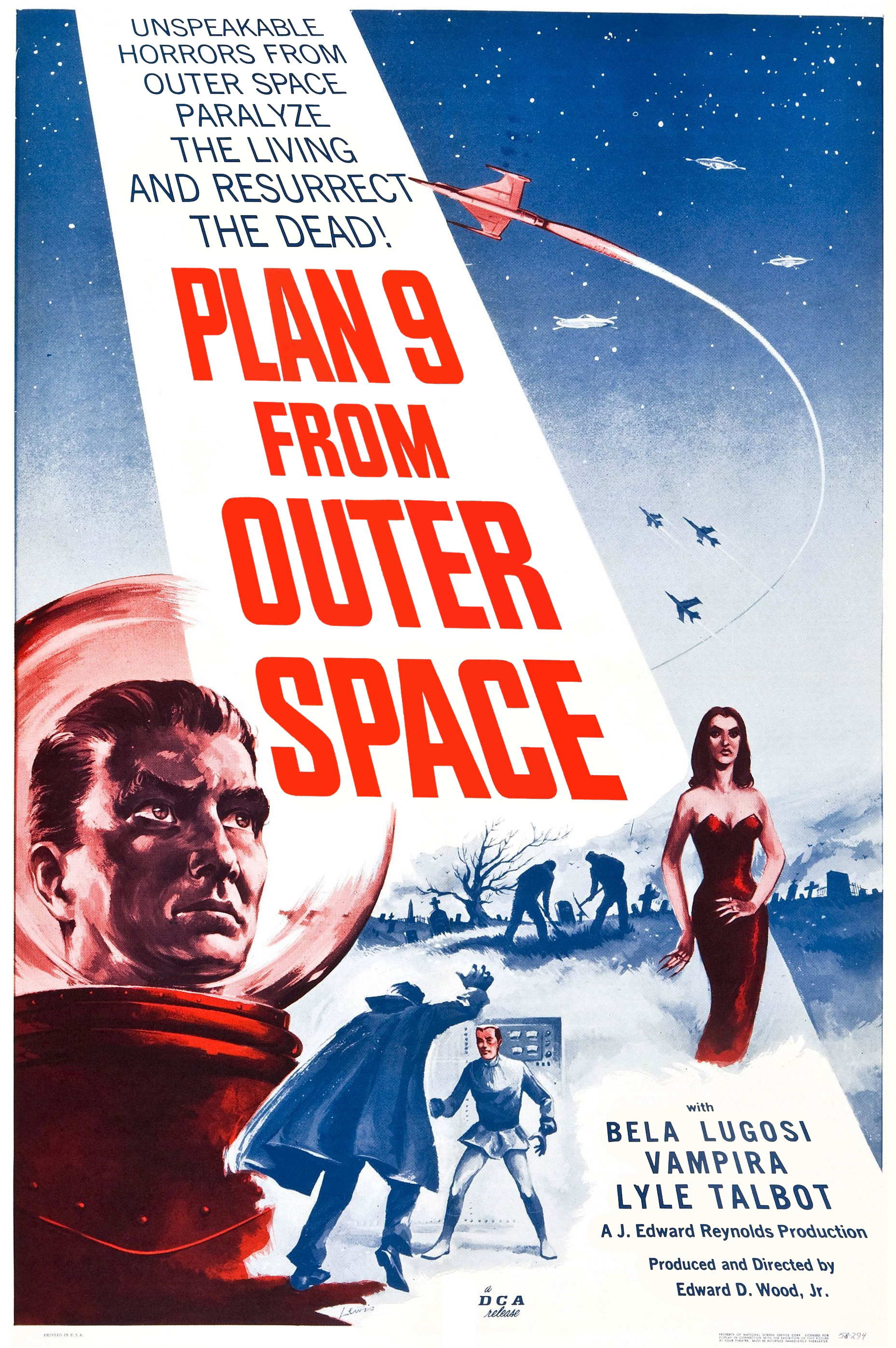|
The Final Girls
''The Final Girls'' is a 2015 American comedy horror film directed by Todd Strauss-Schulson and written by M.A. Fortin and Joshua John Miller. The film stars Taissa Farmiga and Malin Åkerman, with supporting performances from Adam DeVine, Thomas Middleditch, Alia Shawkat, Alexander Ludwig, and Nina Dobrev. The plot follows a group of high school students who are transported into a 1986 slasher film called ''Camp Bloodbath''. The film was originally picked up by New Line Cinema in November 2011, but the script was shopped elsewhere when production did not get off the ground. Later, Sony Pictures Worldwide Acquisitions bought the rights to the film under the Stage 6 Films banner, with Michael London and his company Groundswell Productions producing the feature. Principal photography lasted a month in April–May 2014, taking place in Baton Rouge and St. Francisville, Louisiana. ''The Final Girls'' had its world premiere on March 13, 2015 at South by Southwest. It was releas ... [...More Info...] [...Related Items...] OR: [Wikipedia] [Google] [Baidu] |
Todd Strauss-Schulson
Todd Strauss-Schulson (born June 24, 1980) is an American film director, screenwriter, producer, editor, and cinematographer, best known for directing the comedy film '' A Very Harold & Kumar 3D Christmas'' (2011), the horror comedy film '' The Final Girls'' (2015), and the romantic comedy film '' Isn't It Romantic'' (2019). He has also directed episodes of the television series ''The Inbetweeners'' (2012) and ''Zach Stone Is Gonna Be Famous'' (2013). Early life Strauss-Schulson was born in Forest Hills, Queens, New York City on June 24, 1980. He has one younger sister named Caren. Strauss-Schulson is Jewish and had a Bar Mitzvah ceremony. He attended Emerson College in Boston, Massachusetts, graduating in 2003. Following his graduation, he moved to Los Angeles. Career Strauss-Schulson started his career directing short films such as ''Larceny'' (1997) and ''Backlash'' (1998). He then worked on music videos, which led to 6 months spent in China and Thailand, where he directe ... [...More Info...] [...Related Items...] OR: [Wikipedia] [Google] [Baidu] |
Baton Rouge
Baton Rouge ( ; ) is a city in and the capital of the U.S. state of Louisiana Louisiana , group=pronunciation (French: ''La Louisiane'') is a state in the Deep South and South Central regions of the United States. It is the 20th-smallest by area and the 25th most populous of the 50 U.S. states. Louisiana is borde .... Located the eastern bank of the Mississippi River, it is the county seat, parish seat of East Baton Rouge Parish, Louisiana, East Baton Rouge Parish, Louisiana's most populous List of parishes in Louisiana, parish—the equivalent of counties in other U.S. states. Since 2020, it has been the List of United States cities by population, 99th-most-populous city in the United States and the List of municipalities in Louisiana, second-largest city in Louisiana, after New Orleans; Baton Rouge is the List of capitals in the United States, 18th-most-populous state capital. According to the 2020 United States census, the city-proper had a population of 227,470; ... [...More Info...] [...Related Items...] OR: [Wikipedia] [Google] [Baidu] |
Angela Trimbur
Angela Denise Trimbur (born July 19, 1981) is an American actress, writer, dancer, choreographer, and former reality television participant. Personal life Trimbur was born in Bucks County, Pennsylvania, on July 19, 1981. She attended Neshaminy High School and graduated in 1999. Prior to attending high school, She was homeschooled. She grew up a Jehovah's Witness, though she has stated she no longer practices the religion. Trimbur is a member of the Los Angeles-based basketball team Pistol Shrimps, alongside actress Aubrey Plaza. In 2014 she created the L.A. City Municipal Dance Squad, a team of dancers to perform a halftime show for the Los Angeles Women's Community Basketball pickup league, which quickly grew a large following. Angela began offering workshops and created events called "Slightly Guided Dance Party" hosted by the Museum of Contemporary Art with 300+ in attendance. Trimbur was featured in ''Time'' magazine in 2018, for building a unique community for women. In Ju ... [...More Info...] [...Related Items...] OR: [Wikipedia] [Google] [Baidu] |
Virgin
Virginity is the state of a person who has never engaged in sexual intercourse. The term ''virgin'' originally only referred to sexually inexperienced women, but has evolved to encompass a range of definitions, as found in traditional, modern and ethical concepts. Heterosexual individuals may or may not consider loss of virginity to occur only through penile-vaginal penetration, while people of other sexual orientations often include oral sex, anal sex, or mutual masturbation in their definitions of losing one's virginity. There are cultural and religious traditions that place special value and significance on this state, predominantly towards unmarried females, associated with notions of personal purity, honor, and worth. Like chastity, the concept of virginity has traditionally involved sexual abstinence. The concept of virginity usually involves moral or religious issues and can have consequences in terms of social status and in interpersonal relationships.See her anpages 4 ... [...More Info...] [...Related Items...] OR: [Wikipedia] [Google] [Baidu] |
Urban Legend
An urban legend (sometimes contemporary legend, modern legend, urban myth, or urban tale) is a genre of folklore comprising stories or fallacious claims circulated as true, especially as having happened to a "friend of a friend" or a family member, often with horrifying, humorous, or cautionary elements. These legends can be entertaining but often concern mysterious peril or troubling events, such as disappearances and strange objects or entities. Urban legends may confirm moral standards, reflect prejudices, or be a way to make sense of societal anxieties. Urban legends in the past were most often circulated orally, but now can also be spread by any media. This includes newspapers, mobile news apps, e-mail, and most often, social media. Some urban legends have passed through the years/decades with only minor changes, in where the time period takes place. Generic urban legends are often altered to suit regional variations, but the lesson or moral remains majorly the same. Or ... [...More Info...] [...Related Items...] OR: [Wikipedia] [Google] [Baidu] |
Final Girl
The final girl is a trope in horror films (particularly slasher films). It refers to the last girl(s) or woman alive to confront the killer, ostensibly the one left to tell the story. The final girl has been observed in many films, including ''The Texas Chain Saw Massacre'', ''Halloween'', ''Alien'', '' Friday the 13th'', ''A Nightmare on Elm Street'', ''Scream'' and ''Train to Busan''. The term was coined by Carol J. Clover in her book '' Men, Women, and Chainsaws: Gender in the Modern Horror Film'' (1992). Clover suggested that in these films, the viewer began by sharing the perspective of the killer, but experienced a shift in identification to the final girl partway through the film. Usage of the term The original meaning of "final girl", as described by Clover in 1992, is quite narrow. Clover studied slasher films from the 1970s and 1980s (which is considered the golden age of the genre) and defined the final girl as a female who is the sole survivor of the group of peopl ... [...More Info...] [...Related Items...] OR: [Wikipedia] [Google] [Baidu] |
Selfie
A selfie () is a self-portrait photograph, typically taken with a digital camera or smartphone, which may be held in the hand or supported by a selfie stick. Selfies are often shared on social media, via social networking services such as Facebook, Twitter, Snapchat, and Instagram. They are often casual in nature (or made to appear casual). A "Selfie" typically refers to self-portrait photos that are taken with the camera held at arm's length, as opposed to those taken by using a self-timer or remote. A selfie, however, may include multiple subjects however; as long as the photo is being taken by one of the subjects featured, it is considered a selfie. However, some other terms for selfies with multiple people include usie, groufie, and wefie. Alternatively, one can take a mirror selfie, with the camera pointed at a mirror instead of directly at one's face, often to get a full-body shot. Etymology "Selfie" is an example of hypocorism – a type of word formation th ... [...More Info...] [...Related Items...] OR: [Wikipedia] [Google] [Baidu] |
Time Loop
The time loop or temporal loop is a plot device in fiction whereby characters re-experience a span of time which is repeated, sometimes more than once, with some hope of breaking out of the cycle of repetition. The term "time loop" is sometimes used to refer to a causal loop; however, causal loops are unchanging and self-originating, whereas time loops are constantly resetting: when a certain condition is met, such as a death of a character or a clock reaching a certain time, the loop starts again, possibly with one or more characters retaining the memories from the previous loop. History An early example of a time loop is the 1915 Russian novel ''Strange Life of Ivan Osokin'', where the main character gets to live his life over again but struggles to change it the second time around. It was used in the short story "Doubled and Redoubled" by Malcolm Jameson that appeared in the February 1941 ''Unknown''; the story tells of a person accidentally cursed to repeat a "perfect" day, inc ... [...More Info...] [...Related Items...] OR: [Wikipedia] [Google] [Baidu] |
Cult Film
A cult film or cult movie, also commonly referred to as a cult classic, is a film that has acquired a cult following. Cult films are known for their dedicated, passionate fanbase which forms an elaborate subculture, members of which engage in repeated viewings, dialogue-quoting, and audience participation. Inclusive definitions allow for major studio productions, especially box-office bombs, while exclusive definitions focus more on obscure, transgressive films shunned by the mainstream. The difficulty in defining the term and subjectivity of what qualifies as a cult film mirror classificatory disputes about art. The term ''cult film'' itself was first used in the 1970s to describe the culture that surrounded underground films and midnight movies, though ''cult'' was in common use in film analysis for decades prior to that. Cult films trace their origin back to controversial and suppressed films kept alive by dedicated fans. In some cases, reclaimed or rediscovered films ... [...More Info...] [...Related Items...] OR: [Wikipedia] [Google] [Baidu] |
Horror Film
Horror is a film genre that seeks to elicit fear or disgust in its audience for entertainment purposes. Horror films often explore dark subject matter and may deal with transgressive topics or themes. Broad elements include monsters, apocalyptic events, and religious or folk beliefs. Cinematic techniques used in horror films have been shown to provoke psychological reactions in an audience. Horror films have existed for more than a century. Early inspirations from before the development of film include folklore, religious beliefs and superstitions of different cultures, and the Gothic and horror literature of authors such as Edgar Allan Poe, Bram Stoker, and Mary Shelley. From origins in silent films and German Expressionism, horror only became a codified genre after the release of ''Dracula'' (1931). Many sub-genres emerged in subsequent decades, including body horror, comedy horror, slasher films, supernatural horror and psychological horror. The genre has been produ ... [...More Info...] [...Related Items...] OR: [Wikipedia] [Google] [Baidu] |
_-Youth_(1893).jpg)




